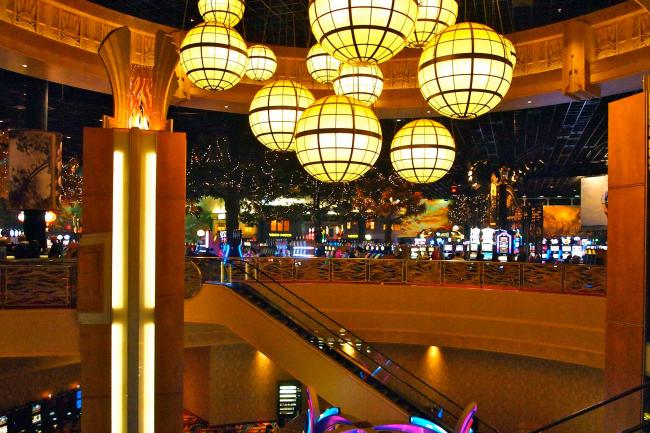When you walk into a casino, your first thought probably isn’t, Look at how sustainable this place is! Casinos are designed to blow you away with the spectacular, not impress you with the sensible.
Nevertheless, casinos are taking sustainability seriously, says Sloan Director of Strategic Accounts Jeff Gilmore.
“Everyone has an ear toward sustainability, even in gaming,” Gilmore says. “Of course they’re about keeping the guests happy, first and foremost, but they do have tremendous water and sewer costs, so the financial impact of water savings is real and tangible.”
Gilmore exhibited for Sloan at the BITAC Casino & Gaming trade show in Scottsdale, Arizona earlier this month, where sustainability was a leading topic. Here’s a recap of his takeaways.
High Efficiency Without Sacrifice
Gilmore attended several sessions at the BITAC event that discussed sustainability. He says the goal is to provide “high efficiency without sacrifice. There’s a fine line between making your facility more sustainable and keeping the guests happy.”
Today’s younger guests, however, see sustainability as a plus. Gilmore says, “Demographics are changing, and sustainability is part and parcel of the new demographic. Gamblers are younger and more in tune with environmental impacts.”
He points to MGM Resorts as a leader in sustainable casino design, and two of that company’s achievements are worth highlighting:
- The MGM Grand Las Vegas has sharply reduced its reliance on nearby Lake Mead, where the water level has fallen nearly 13% since the turn of the millennium. Today the resort draws 100% of exterior irrigation water and 60% of cooling tower water from wells, helping reduce its reservoir draw by 21 million gallons in 2018.
- A 6.4MW, 20-acre solar array on the rooftop of the Mandalay Bay Convention Center offsets peak electricity demands by as much as 20% — enough to power 1,000 homes for a year.
Since reduced electricity usage contributes to lower water usage as well, these two efforts signal an enormous dedication to water savings in an area — the Mojave Desert — where water sustainability is paramount.
What Your Next Casino Restroom Design Might Feature
“Architects, designers and owners are devoting more time and energy to what the casino restroom looks like and how it functions,” says Gilmore. “It’s an important phase of the building design, since it’s maybe the most frequented space in the building other than the casino floor itself.”
He names several key design considerations:
- Touchless faucets and flushometers. “People really don’t want to touch anything in a public restroom,” says Gilmore. Touchless faucets also reduce water usage by up to 40%.
- Alternative energy supplies for faucets and flushometers. Solar and turbine technologies recharge faucet capacitors, extending battery life two to three times what would otherwise be expected.
- A trend toward connected components. Built-in diagnostics, programmability and maintenance scheduling — like you’ll find in our smart Optima® faucet line — are easier to service, maintain and adjust for optimized water management.
“As casino restrooms evolve, there’s also an emphasis on wellness as well as sustainability,” says Gilmore. “They really go hand in hand. Architects and designers are looking for all those elements, and they all play into the specification process.”
Sloan helps architects, designers, engineers and building owners create stylish, sustainable restrooms for hospitality and entertainment venues worldwide. Want to know more? Talk to Sloan!
Stay Up to Date
Sign up for the Sloan blog to receive information on the latest trends in commercial building, technology advancements and product updates. It's the leading source of industry news for architects, designers, engineers and contractors.
